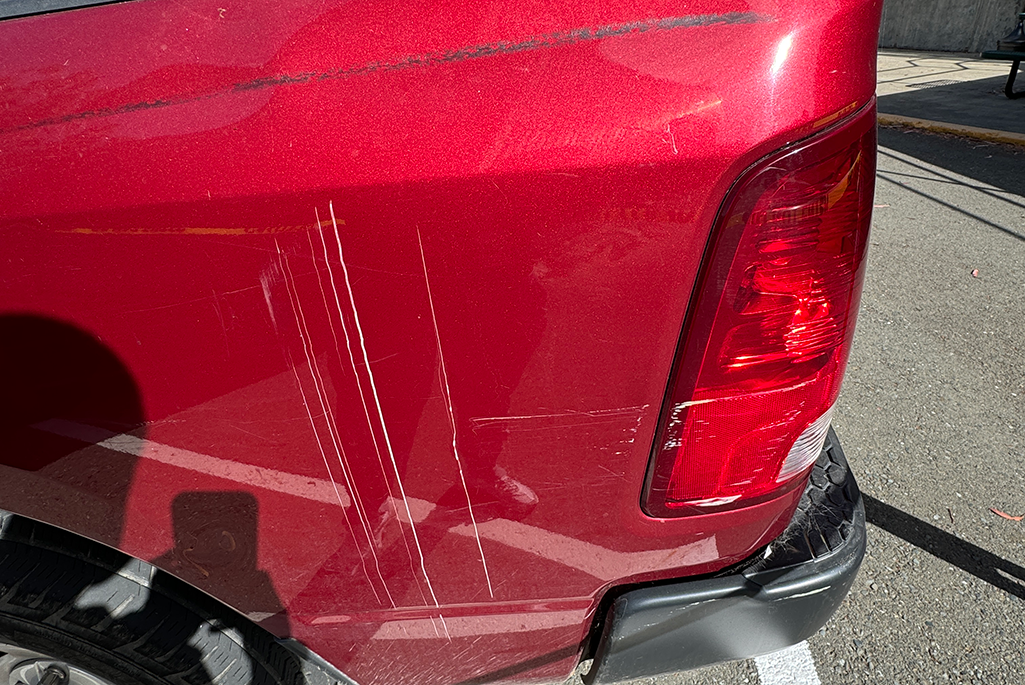For most people, the word “vehicle” brings to mind visions of a personal car. For Heather Pinto, Department Head for Site Services, and Kenya Broadnax, Fleet Services Manager, the word can mean anything from a four-door sedan to a huge crane to a tiny electric cart.
As Fleet Services Manager, Kenya oversees a fleet of over 250 different motorized vehicles worth $1.3 million. As Kenya puts it, “Any equipment capable of moving either through its own propulsion system or by using fuel falls under Fleet’s oversight.” In official terms, Fleet is a distributed program that assists the Lab in acquiring and maintaining vehicles at the lowest cost, safeguarding vehicle assets, and ensuring that employees operate the Laboratory’s fleet safely. Vehicles are used for a wide range of mission, training, and administrative use activities.
One of the most pressing issues on Kenya’s plate these days is managing damages. Fleet Services takes two approaches to manage this issue:
- Encourage prompt damage reporting
- Encourage more care when operating fleet vehicles
“We are required by the DOE to report damages to our fleet vehicles.” Kenya says, “If a vehicle has damage on it, it should be reported right away. If you’re not sure if it was reported, you should still report it.” And there’s a compelling financial incentive to report damages immediately. Prompt reporting of damages allows Fleet Services to arrange repairs while the vehicle is still in the Lab’s care. All but five of the vehicles that Fleet Services oversees are owned by the General Services Administration (GSA) and leased to the Lab. It is significantly less expensive if the Lab repairs a vehicle before it is returned to the GSA. Since all repairs are charged back to the department that uses the vehicle, it’s in the department’s and Lab’s best interest to avoid causing damage and to report damages as soon as they are discovered.
“I liken it to a car rental agency,” says Kenya. “If you go to a rental agency, you’re supposed to walk around the vehicle, and you inspect it yourself before you drive it, and after you come back, and report any damages.”
A concern that sometimes arises is that a vehicle critical for a department’s work will be out of service if damages are reported. “Fleet Services can help if you’re afraid of not having a vehicle while another gets repaired. That’s an awesome thing that Fleet Services can do now that is better than in the past. Kenya’s got a really great process now where she can get vehicles to help supplement while your vehicle’s out getting repaired” says Heather.
Berkeley Lab has a high rate of vehicle damage. A lot of it can be traced back to the challenging physical environment of the Lab’s hill site, which has narrow roads, tight turns, and multiple obstructions. “Damage to our vehicles often happens when someone hits one of the bollards, or a bush,” says Heather. “People hit one of the short walls and other stationary objects. A number of people hit their side mirrors. And by far, most damage is caused while backing up.”
All of this damage adds up. Fleet vehicles incurred $60,000 in damage in fiscal year 2024. While the physical confines of the Lab can’t change, driver behavior can. Heather’s ask of fleet vehicle drivers is simple. “Slow down. Use a spotter or get out and look. Use common sense. Driving on site is like anything we do here. Safety is not about getting your job done. It’s about getting your job done safely, and safety practices apply to the vehicle as well.”
RESOURCES
